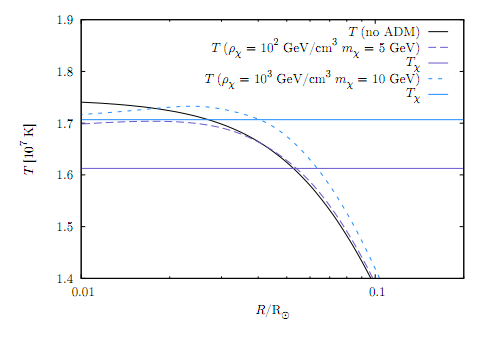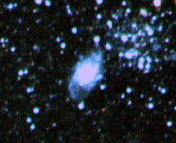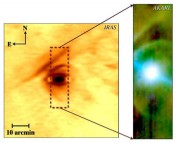- Title: Main Sequence stars with asymmetric dark matter
- Authors: Fabio Iocco, Marco Taoso, Florent Leclercq, and Georges Meynet
- Author’s Institution: Institut d’Astrophysique de Paris
We hear quite a bit about dark matter on astrobites, but almost always in the context of galaxies, galaxy clusters, or the large-scale structure of the universe. Today’s paper examines this topic from a completely different angle: the authors investigate what effects the presence of dark matter particles may have on the structure and visible properties of a single star. Specifically, they examine the case of a solar mass star situated in an environment with a certain density of Weakly Interacting Massive Particles (WIMPs, one of the leading dark matter candidates). Before we get to their results, there are a few important ideas worth mentioning:
Stars can “capture” WIMPs from their environment. Just to be clear: WIMPs are hypothetical particles. However, they are hypothetical particles with a few very specific properties. They don’t interact with photons of light (hence the “dark” in dark matter…) but they do interact with other particles via gravity and the weak nuclear force. Hence, as a star travels through a galaxy (and therefore a dark matter halo) it has a small, but non-zero probability of scattering a dark matter particle into its interior – capturing it. A star in a denser dark matter environment (for instance, the center region of our own galaxy or a dwarf spheroidal galaxy) will capture more particles over the course of its life.
Stellar structure is a balancing act. As a general rule, the structure of a star represents an equilibrium point between gravity pulling inward and radiation pressure (due to nuclear energy generation) pushing outward. How this balance occurs will be different depending on (among other things) the quantity of different elements/particles at different locations within the star. When captured in large enough quantities, dark matter particles add another variable to this equation.
WIMPs are different. When considering the balancing act described above, it is important to remember that WIMPs do not interact the same way as other particles in stellar interiors. Although they are able to transport energy out of the core of the star (through collisions with other particles), they do not contribute to the radiation pressure supporting the star (recall they do not interact or emit photons of light).
Ok, so now that we have the necessary background, we are ready for some of the nitty gritty details. The authors use a numerical code (called Darkstars), which simultaneously solves the equations of WIMP capture and stellar evolution. They consider several different (but realistic) dark matter environments. Here is what they find:
The Result: A Wonky Star
Amazingly, the authors find that for certain very high dark matter density environments (which means that the star captures many particles), the energy carried out of the inner stellar core by the dark matter particles can actually exceed the amount of energy created there by nuclear reactions! The effect of this is to lower the temperature in the inner core, and therefore decrease the efficiency of the nuclear reactions taking place there. This, in turn, decreases the amount of supporting radiation pressure produced. This is a very significant consequence, and the final result on the star can go one of two ways.
In the first case, the dark matter only carries away more energy than is produced from the very inner region of the stellar core – but not from the entire region undergoing nuclear fusion. Under these circumstances, the outer core will respond by increasing its temperature and nuclear reaction rate in order to create enough radiation pressure to support the star. However, if enough dark matter is present in the star, it is possible for the temperature of the stellar core to be lowered throughout the entire region undergoing nuclear fusion. In this case, the star will be unable to compensate and will be forced to contract under the pull of gravity. These two cases are demonstrated in the figure on the left below, which shows the temperature profile in the core of a star. The black line is the case with no dark matter, the dashed light blue line the first case, and the dashed dark blue line the second.
Interestingly, the authors offer some hope that these results can be used to test different models for dark matter. In both of the cases above, the outward appearance of the star (and hence its location on the HR-diagram) would be altered. Exactly how its appearance is altered depends on how much dark matter the star manages to capture, and how much energy this dark matter can transport out of the core. This, in turn, depends both on the density of dark matter in the stellar environment, but also the properties (i.e., mass) of the dark matter itself. The figure on the right below shows a few different locations on the HR-diagram for a one solar mass star with different dark matter parameters. The dark matter densities used are roughly comparable to the values estimated for the center of the Milky Way.







Trackbacks/Pingbacks